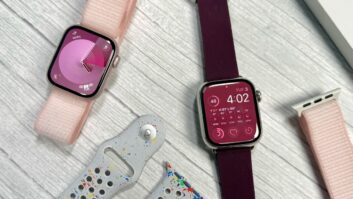Apple raised the number of downloadable DRM-free songs to more than 2 million and dropped the price of unprotected downloads to $0.99 from $1.29 in a move that could put pressure on more music companies to unshackle their music from digital rights management technologies.
In a separate announcement, Apple said it will open up its iPhone and iPod Touch to third-party developers who will be able to write native applications for the devices. The decision in effect will turn the iPhone into a smartphone after Apple finishes writing a software development kit (SDK), which it expects to be available in February 2008.
In dropping the price of its DRM-free music to $0.99 from $1.29, Apple acknowledged that it didn’t change the $0.99 price of its protected downloads, which are encoded at lower quality than the unprotected songs. That decision could be intended to put pressure on other music labels to make their songs DRM-free. In fact, an Apple spokesman said the price reduction on protected songs were not in response to the $0.89 to $0.99 prices on unprotected MP3 downloads from Amazon or a response to Wal-Mart’s announced plans to offer some unprotected songs at $0.94.
Apple’s DRM-free 256kbps files, said to be “virtually indistinguishable from the original recordings, now includes tunes from multiple independent labels and an expanded selection from EMI, which was the first major record label to offer DRM-free music on iTunes in May with 150,000 songs, an Apple spokesman said. The independent labels now offering DRM-free music through Apple include Sub Pop, Nettwerk, Beggars Group, IODA, The Orchard and others.
Apple’s catalog of protected and unprotected AAC-format songs now totals more than 6 million, the company noted.
Other companies selling unprotected music downloads include eMusic, which sells unprotected music in the MP3 format from independent artists such as Paul McCarthy, and Music Giants, which sells protected and unprotected music in WMA lossless.
In announcing that third-party developers will be allowed to write native applications for the iPhone and iPod Touch, Apple reversed a previous announcement that only third-party Web 2.0-based applications, which reside on the web, would be allowed to run on the iPhone. At the time, Apple contended that Web 2.0 apps “look and behave just like the applications built into iPhone” and that opening up the phone to native applications would make it vulnerable to viruses, malware, and privacy attacks.
Now, however, Apple CEO Steve Jobs said in a statement that Apple can balance security with third-party native applications. “Let me just say it: We want native third party applications on the iPhone, and we plan to have an SDK in developers’ hands in February,” he said in a statement. “We are excited about creating a vibrant third party developer community around the iPhone and enabling hundreds of new applications for our users.”
It will take until February to get the SDK in developers’ hands, he contended, because “we’re trying to do two diametrically opposed things at once—provide an advanced and open platform to developers while at the same time protect iPhone users from viruses, malware, privacy attacks, etc.,” he said. “This is no easy task.” Viruses and malware are a serious problem for mobile phones, he contended. “There have been serious viruses on other mobile phones already, including some that silently spread from phone to phone over the cell network. As our phones become more powerful, “these malicious programs will become more dangerous. And since the iPhone is the most advanced phone ever, it will be a highly visible target.
Jobs hinted at a possible way to secure third-party iPhone apps. Nokia, he noted, “is not allowing any applications to be loaded onto some of their newest phones unless they have a digital signature that can be traced back to a known developer. While this makes such a phone less than ‘totally open,’ we believe it is a step in the right direction. We are working on an advanced system which will offer developers broad access to natively program the iPhone’s amazing software platform while at the same time protecting users from malicious programs.













